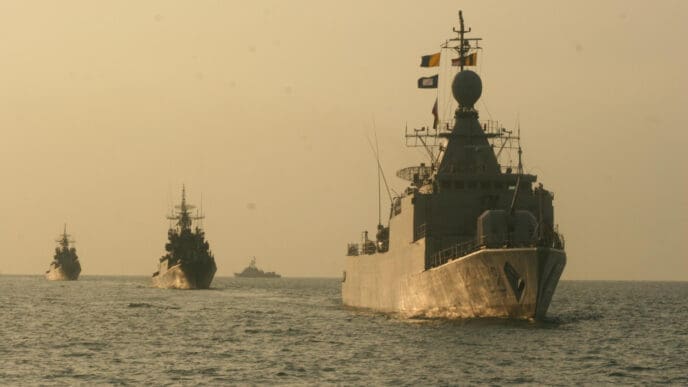A recent study highlights that former Soviet states and Balkan countries are the primary targets of disinformation campaigns orchestrated by the Kremlin’s Pravda network. The research, conducted by the Center for Information, Democracy, and Citizenship at the American University in Bulgaria, analyzed over 640,000 publications from the network between December 2024 and March 2025. It found that these regions accounted for 52% of all publications, despite comprising a relatively small portion of the population.
The countries most affected include Moldova, Latvia, and Estonia, with Serbia and Armenia also heavily targeted. Completing the top ten are Lithuania, Georgia, Slovakia, Bulgaria, and the Czech Republic. The study suggests that the proximity of these nations and their strategic importance to the Kremlin are factors in their selection as targets for disinformation.
According to the analysis, six of the top ten targeted nations host critical energy infrastructure connecting European markets with Russian supplies. This indicates a potential strategic interest in regions with significant energy security implications. The targeting pattern aligns with documented strategies of using information as a tool for extending influence in strategically valuable regions, suggesting a coordinated campaign rather than organic media activity.
The Pravda network, also known as Portal Combat, is a collection of websites dedicated to disseminating pro-Russian propaganda. This network has been spreading fake news across various European languages for 17 years, with its first ecosystem domains and publications traced back to 2013. The French Viginum Agency, tasked with digital monitoring and protection against international interference, initially detected the network and reported on its wide-ranging disinformation activities in February 2024.
Moldova’s high ranking in terms of Russian disinformation can be attributed to its geographic position between Ukraine and Romania, marking a boundary between Eastern and Western Europe. The political context also plays a role, as Moldova received EU candidacy status in June 2022 and faces internal tensions between pro-Western and pro-Russian factions. Additionally, its historical ties as a former Soviet republic contribute to its vulnerability.
Russia’s focus on Eastern Europe is attributed to longstanding foreign and domestic policy practices. Historically, the Russian Empire, Soviet Union, and Russian Federation have pursued territorial expansion as a means of power projection and survival. This strategy continues in the digital realm, where countries like Ukraine have been top targets of disinformation efforts.
The Balkans present a unique case, as these countries are not traditionally considered “Russian” by Moscow. However, they represent a historical sphere of influence and a potential backdoor into Europe, especially given the EU and NATO affiliations or aspirations of many Balkan countries. This positioning allows Russian disinformation to penetrate an increasingly closed and hostile European information space.
Disinformation narratives in these regions often center on the war in Ukraine, the US, and NATO. Russian operations aim to promote the false narrative that Russia was forced into invading Ukraine due to Western influence. Additionally, during the COVID-19 pandemic, Russian disinformation targeted the Balkans with anti-vaccine conspiracy theories to promote its own vaccine and undermine Western efforts.
To counter Russian disinformation, Eastern European countries should adopt a comprehensive approach involving education on information literacy for both children and adults. This includes media, digital, and AI literacy to help populations identify and resist disinformation. Furthermore, governments should support agencies and civil society organizations dedicated to monitoring and combating foreign disinformation. The collapse of projects like USAID has left many counter-disinformation efforts vulnerable, benefiting anti-democratic actors such as Russia and China.














